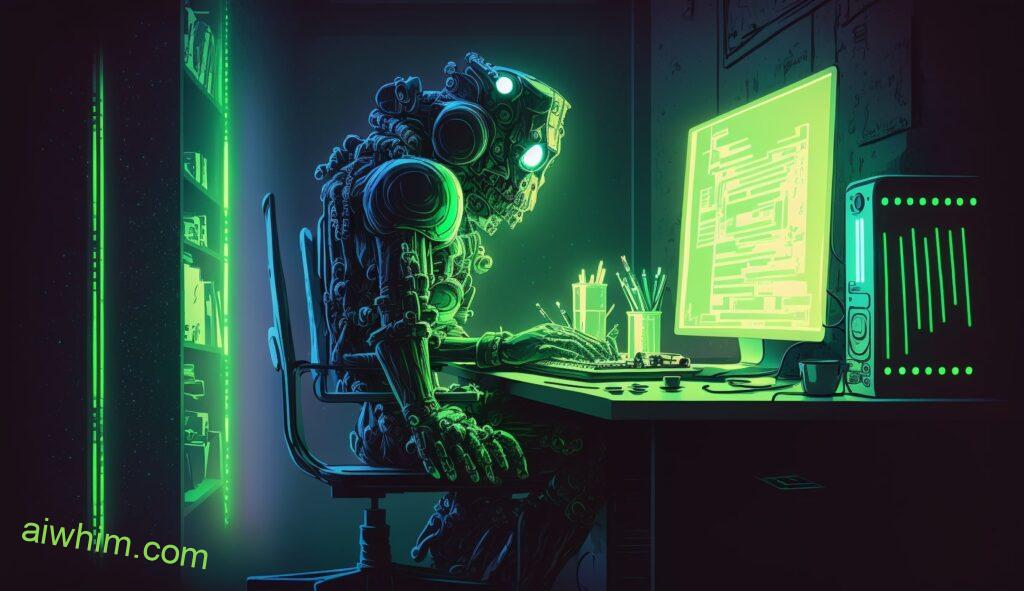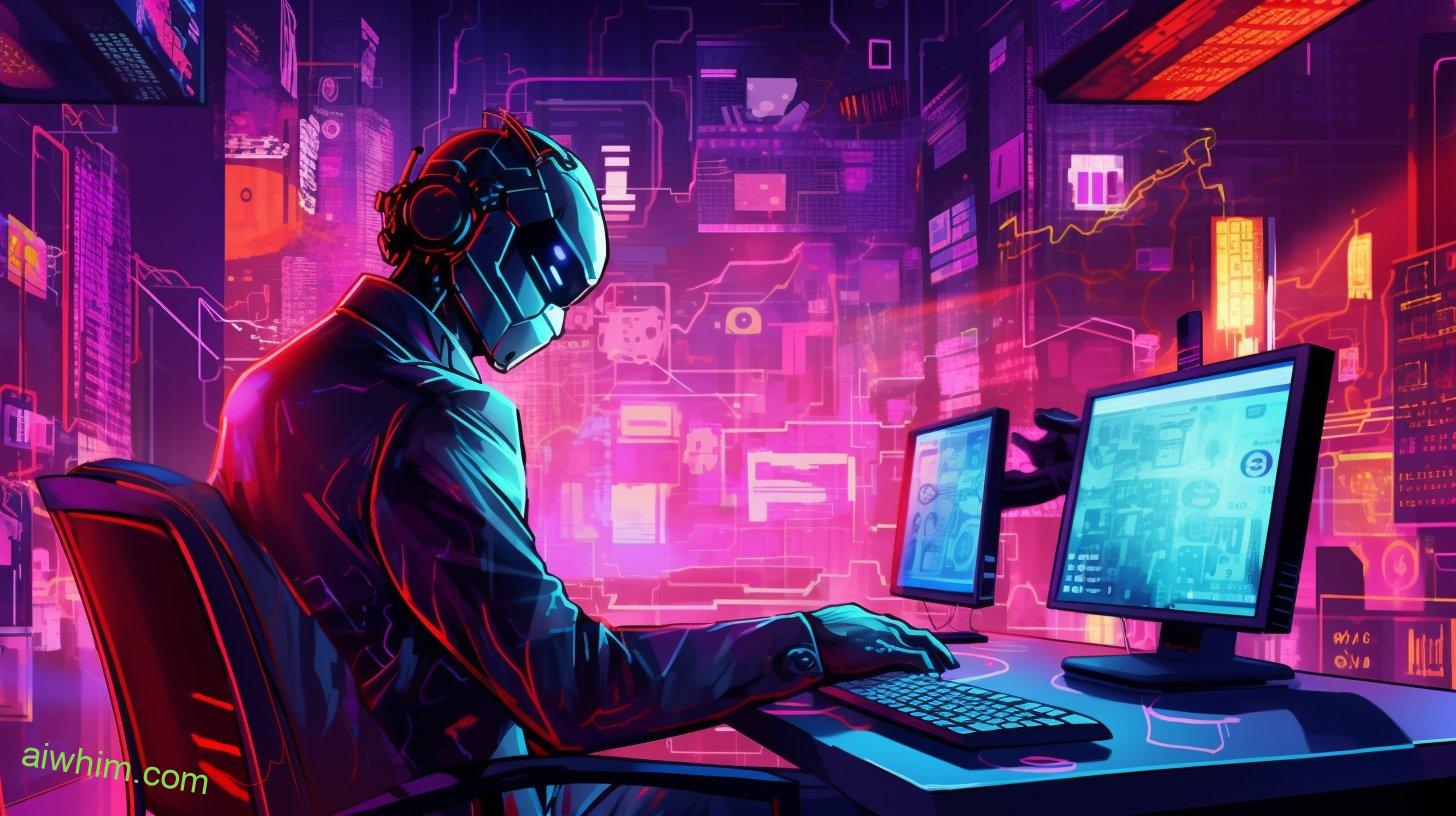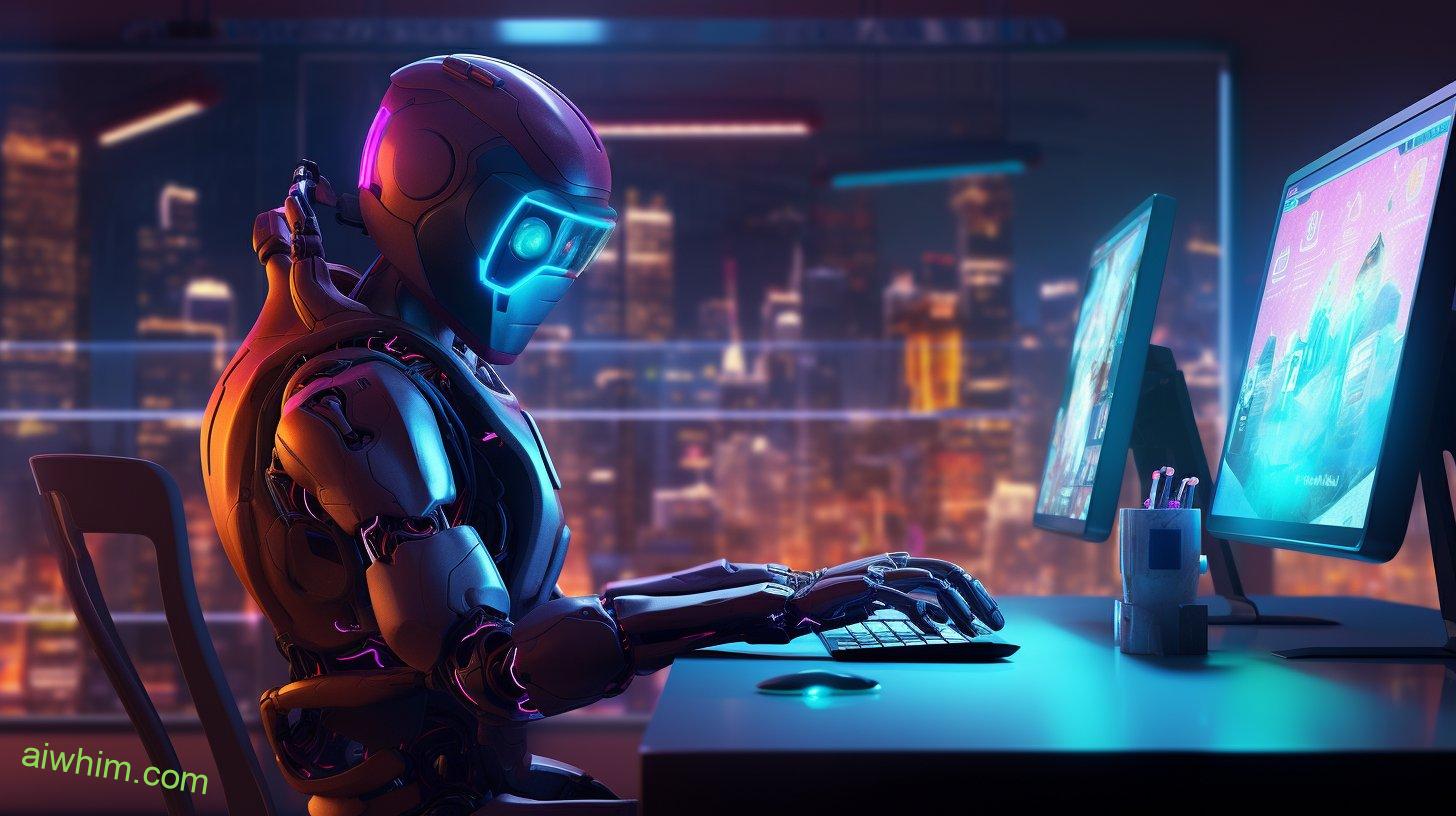Are you a scientist worried about the potential for Artificial Intelligence (AI) to take your job? You’re not alone. AI is advancing at an astonishing rate, raising serious questions about its impact on our lives and employment prospects. Whether it’s replacing mundane tasks or complex research roles, AI could easily replace humans in many areas of science. In this article we’ll explore whether scientists should be concerned that their jobs are at risk from AI‘s encroachment into the workplace.
The rise of AI has been dramatic over recent years, with machine learning becoming increasingly sophisticated and capable of performing more complex cognitive functions than ever before. This means that AI can now perform many human-like activities such as data analysis, natural language processing and even making predictions. As these abilities become more refined, they have the potential to automate tasks previously done by humans – including those performed by scientists! But how realistic is the threat of losing one’s job due to advances in artificial intelligence?
It may feel like a daunting prospect but there is no reason for scientists to panic just yet – while automation does pose some risks to certain areas of scientific work, it also presents opportunities for growth and development in other areas. We’ll look at both sides of the argument in detail so you can make up your own mind about the future of your career.
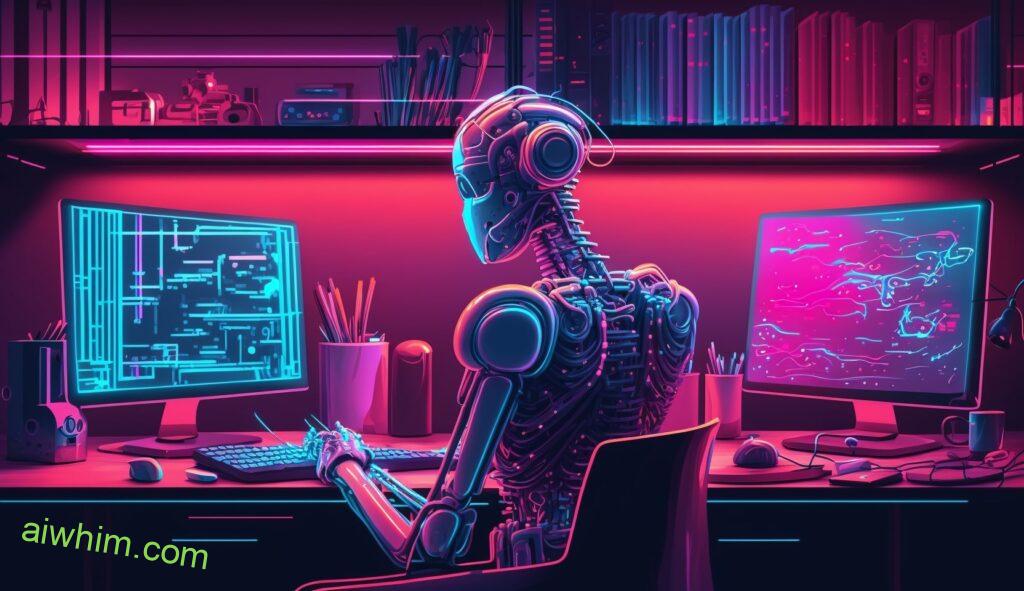
This article addresses the specific job risks of scientist, from artificial intelligence. If you are instead interested in AI’s threat to college professors, read more by following the link.
Definition Of Artificial Intelligence
It’s the age of technology, and Artificial Intelligence (AI) is leading the way. But what exactly does AI mean? To understand it better, let’s take a closer look at its components: Machine Learning, Deep Learning, Natural Language Processing (NLP), and Computer Vision.
Machine learning uses algorithms to learn from data without explicit programming. It can identify patterns among large volumes of data that are too complex for humans to detect easily. Deep learning expands on machine learning by using multi-layered artificial neural networks to process huge amounts of information more quickly and accurately than ever before. NLP applies these concepts to language processing tasks such as text analysis, sentiment analysis, and dialogue generation. Finally, computer vision combines deep learning with image recognition techniques to classify objects in digital images or videos.
These emerging technologies have already had an enormous impact on our lives; they’ve revolutionized how we interact with computers and enabled us to solve problems faster and more efficiently than ever before.

History Of AI And Job Automation
The history of AI and job automation is an ever-evolving one. Automation has been around since the beginnings of science, with machines being used to automate tasks that were previously done by humans. In more recent times, however, Artificial Intelligence (AI) technology has taken job automation to a whole new level. Today’s AI systems are capable of doing things that no human could have imagined even a few decades ago.
The first major step towards AI job automation was in the 1950s when computers began to become commonplace in businesses and workplaces. Machines such as punch cards and early computing systems allowed for automated data processing which drastically reduced the amount of time it took to complete complex calculations or tasks. From there, advances in machine learning algorithms made it possible for computers to start taking on more complex jobs such as data analysis and decision making.
In the present day, AI technology is ubiquitous across many industries from manufacturing to finance and healthcare. The use of AI has enabled companies to reduce costs while increasing efficiency through improved productivity, accuracy and safety standards. This increased reliance on automated processes means fewer people are needed to perform certain roles – something we’re already seeing today in sectors like retail banking where chatbots can now handle customer enquiries instead of humans. Although this shift may cause concern among some workers about their future employment prospects, it also opens up exciting opportunities for those who possess the skills necessary to work alongside sophisticated technologies.
These advancements demonstrate how far we’ve come over the years but they also bring into question our need for a workforce that still relies heavily on manual labor and traditional methods of working; after all, if most functions can be performed by machines then what purpose do humans serve? To answer this question would require us delving deeper into how societies will adapt once a large number of jobs become automated due to advances in artificial intelligence technology – something that remains uncertain at this stage.
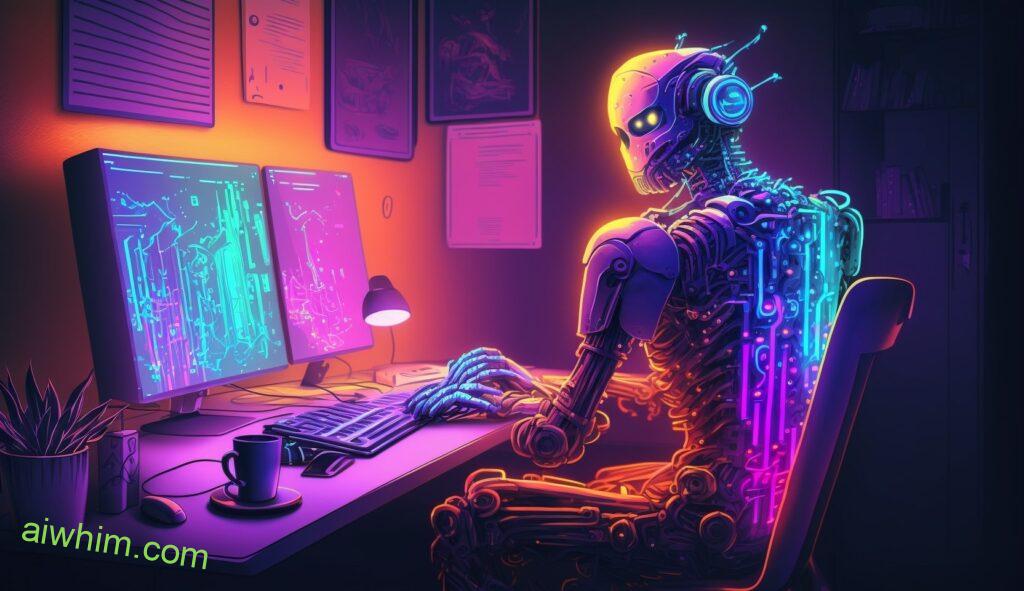
Impact Of AI On Scientific Fields
The implications of AI on the scientific fields are vast and cause many to be worried. AI has already had an effect on research, as it can quickly process large amounts of data that would otherwise take humans weeks or months to analyze. This could lead to a situation in which scientists may no longer have control over what is published in their field, as decisions about which studies should be prioritized become increasingly automated. Additionally, AI-driven systems can generate new ideas and insights faster than people ever could—a potential threat to human jobs within science.
Though some worry about the long-term effects of AI on scientific research, others believe this technology will bring great advances in areas such as drug discovery or medical diagnosis. For example, using machine learning algorithms could help researchers identify patterns in complex biological data that they might not have seen before. In addition, robots could be used for repetitive tasks like running experiments or collecting samples from remote locations; saving time and money while also reducing errors caused by human error.
AI also provides numerous opportunities for collaboration between experts around the world who previously wouldn’t have been able to work together due to geographical constraints. By automating certain parts of the research process, teams can focus more on understanding results rather than spending hours processing raw data manually. Ultimately, these advancements promise to make scientific discoveries even more accessible across different countries and disciplines.
Factors Contributing To Job Losses Among Scientists
Amidst the rapid development of automation technology, it is no surprise that ai has become implicated in job displacement. As more and more businesses turn to robots and algorithms for efficiency, fewer human workers are needed – leading to an overall decrease in employment opportunities. The fear of losing one’s job to a machine isn’t unfounded; here are three major factors contributing to this trend:
- Job Automation: Companies have been increasingly adopting automated systems as an alternative to hiring employees. This means less job openings and greater competition when applying for available positions.
- AI Development: Artificial intelligence (AI) continues to prove itself as a viable source of labor with its ability to rapidly process data and make decisions faster than humans can – making it attractive for companies looking for cost-effective solutions.
- Economic Shifts: With advancements in technology come changes in consumer demand which often leads to shifts in the economy – creating new jobs while eliminating others at the same time.
This combination of forces makes it difficult for scientists, or anyone else trying to stay ahead on the career ladder, not to be anxious about their future prospects. It’s becoming harder and harder each day to find stable work without risking being replaced by machines – leaving many feeling powerless against these powerful economic forces beyond their control.
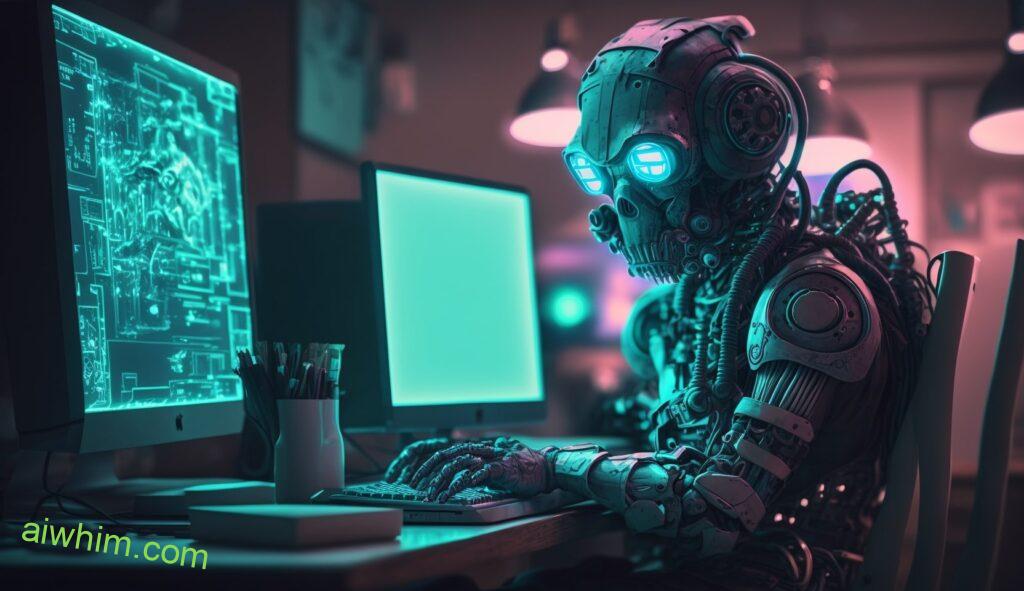
Is The Rise Of AI Inevitable?
The question of whether the rise of AI is inevitable has become increasingly relevant as technological advances increase rapidly. With automation and AI becoming more prominent in many industries, it’s worth considering how this will affect job security for scientists. While some experts argue that there is an inevitability to the use of AI, others believe government policies should limit its growth.
Firstly, AI automates processes which could make certain jobs redundant – including those held by scientists. This means that if governments do not take active measures to ensure people are still employed in these positions, then they risk losing their place in the workforce to machines. On the other hand, proponents of increased use of AI suggest that ai-driven automation can improve efficiency and productivity while reducing costs. Thus, it may be beneficial for businesses to invest in technologies such as ai automation even if it means replacing human labor with machines.
Secondly, no matter what government policies are put into effect regarding ai technology and automation, there is always going to be progress made in terms of technological advancement. Even if regulations attempt to limit or impede progress within certain areas related to artificial intelligence, new breakthroughs will occur regardless; meaning that ultimately we cannot prevent advancements from happening altogether. Therefore, ensuring job security for scientists requires finding ways to work alongside changing technologies rather than against them.
Ultimately, although there is an element of inevitability when it comes to changes brought about by advancing technology and increasing automation driven by AI; proactive steps need to be taken in order to guarantee job security for scientists now and into the future. Governments must create effective policies aimed at protecting workers from being replaced by machines whilst also allowing companies room to innovate through technology – striking the perfect balance between both parties’ needs.

Will AI Replace Human Scientists?
The potential for AI to replace human scientists is a real and present threat. As automation continues to advance, more jobs can be replaced by machines that are faster, cheaper and less error-prone than humans. This could lead to fewer job opportunities in the scientific field – or worse yet, complete replacement of those jobs with AI systems.
AI technology has already made an impact on many areas of science which have traditionally relied heavily on manual labor including biology, chemistry and physics. For example, robots are now being used in drug discovery processes as they can analyze large amounts of data much faster than any human scientist could ever do. With advances like this happening all around us it’s easy to see why some people fear that soon there will no longer be a need for human scientists at all.
At the same time though, some experts believe that instead of replacing humans entirely, AI will actually create more work opportunities for them. By automating certain tasks such as analyzing data or performing experiments, AI may free up scientists’ time for other activities such as designing new experiments or coming up with creative solutions to problems. In addition, having access to advanced technologies powered by AI might allow researchers to tackle bigger challenges and push the boundaries of science further than ever before – something that would not be possible without these tools.
A reality where both human scientists and AI coexist seems likely then; rather than one replacing the other completely we should anticipate seeing these two types of workers working together towards greater success in the scientific field.

The Role Of Technology In Research
As technology advances, it is no surprise that its role in research has grown significantly. From artificial intelligence and machine learning to big data analysis, technology plays a major part in how scientists approach their work.
The first way technology has had an impact on research is by streamlining the process of gathering data and running experiments. By taking advantage of automated systems and digital tools, researchers can conduct more efficient tests with greater accuracy than ever before. In addition, technology allows for the development of new methods for collecting, analyzing, and interpreting data quickly and accurately.
Technology also helps scientists collaborate with one another more easily than ever before. Through online forums and platforms like GitHub, researchers from around the world are able to share their knowledge and ideas with each other, leading to faster progress in areas such as drug discovery or energy efficiency solutions.
Moreover, technologies such as virtual reality enable researchers to explore hazardous environments without putting themselves at risk – making discoveries that could not have been made otherwise. They can also use computer simulations to test out theories much faster than would be possible through traditional experimentation techniques.
Benefits of Technology in Research:
- Streamline the process of gathering data & running experiments
- Facilitate collaboration between researchers worldwide
- Explore hazardous environments safely
- Test out theories much faster using computer simulations – Automate tedious lab tasks, freeing up time for more creative thinking
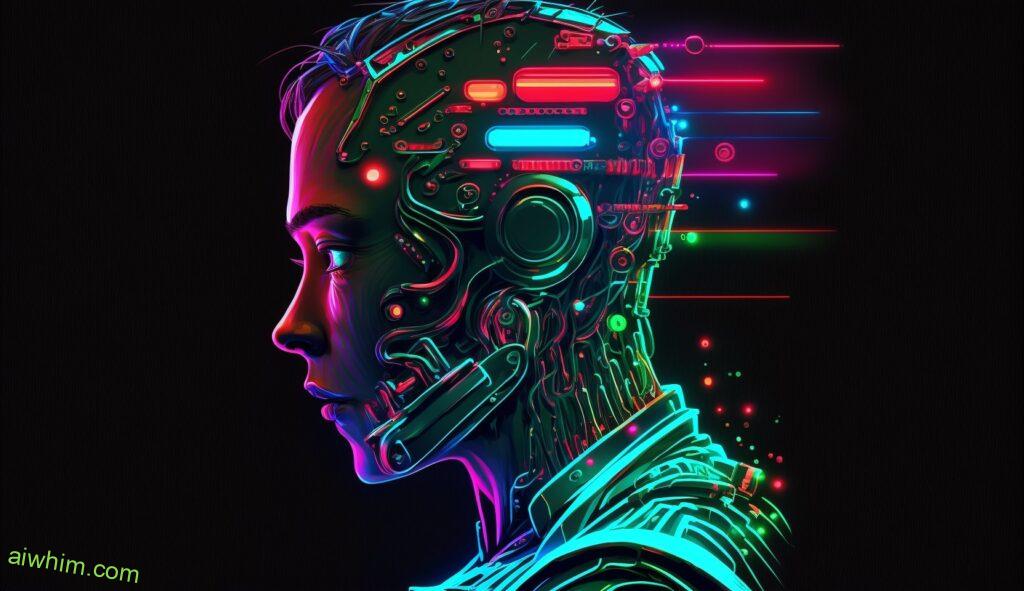
Benefits And Drawbacks Of AI For Science
The world of science has been revolutionized by technology, and Artificial Intelligence (AI) is at the forefront of this transformation. From machine learning to robotics, AI has become a major player in research and development. But what are the advantages and drawbacks of introducing AI into the scientific process?
One of the primary advantages that AI provides for scientists is its ability to quickly analyze large sets of data with great accuracy. Machine-learning algorithms can be used to identify patterns in complex datasets which could take humans far longer to discern. Additionally, automation technologies can save researchers time when conducting experiments or making calculations. This allows them to focus on more difficult tasks without having to worry about mundane repetitions taking up valuable resources. Furthermore, advancements in robotics have enabled scientists to create robotic devices that can collect samples from hard-to-reach places such as deep ocean trenches or volcanoes – something previously impossible due to physical constraints.
On the other hand, some researchers express concern over whether machines will ever be able think creatively like human beings do; an essential component required for groundbreaking discoveries. There is also a risk that AI systems may not always interpret data correctly due to flawed programming or biased datasets which could lead scientists down wrong paths in their investigations. Finally, many people fear that robots might eventually replace most manual labor jobs within academia including those held by academic assistants, administrative staff, and even professors themselves!
Overall it appears that while there are certain benefits associated with incorporating AI into modern day scientific practices, caution should still be exercised when utilizing these tools so that hasty decisions based on inaccurate information are not made, or predictions derived from faulty models or algorithms.
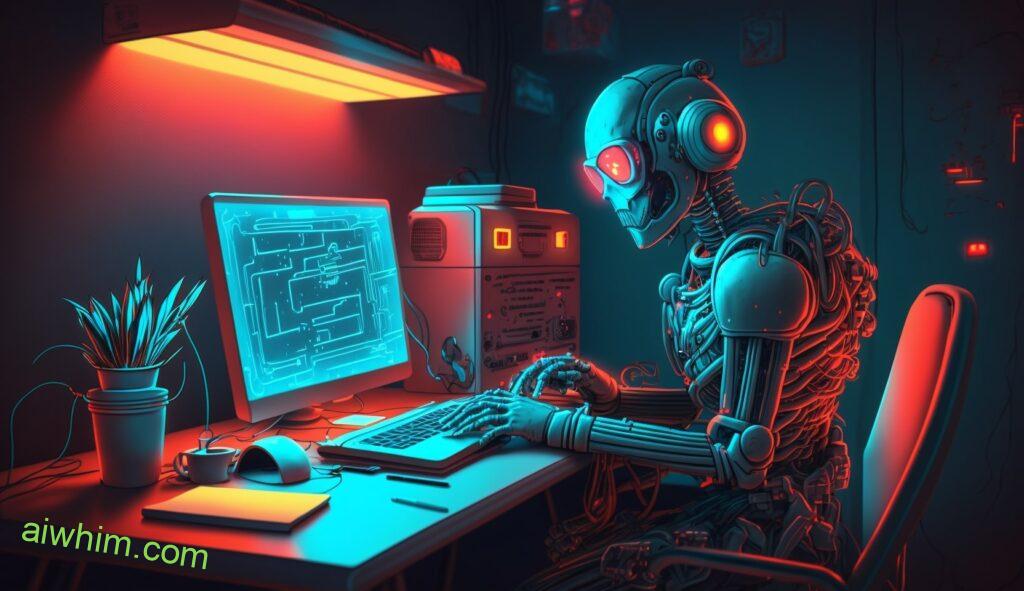
How Government Policies Can Help Protect Jobs
Government policies can be an effective tool for protecting jobs in the face of automation. By introducing labor laws and job security measures, governments can ensure that workers maintain their rights and are adequately protected from potential threats posed by AI-driven technologies. Automation policies should be tailored to each sector to safeguard the livelihoods of those working within it, while also creating additional opportunities when available.
For example, government could introduce a training scheme which enables people to upgrade their skillset so they remain competitive in their current roles or gain access to new ones as technology advances. This would allow them to stay employable and retain some control over their future. Additionally, governments should look into setting up task forces composed of industry experts who will help create strategies on how best to protect workers’ jobs during times of technological change.
It is important for both employers and employees alike that there are clear regulations in place around job protection, especially when advancements such as AI enter the workplace. The best way for governments to achieve this is through well thought out policy initiatives that take into account the unique needs of different sectors and stakeholders involved with any given area of work. In doing so, policymakers can ensure job security throughout periods of rapid technological development and provide individuals with options if at risk of redundancy due to automation processes.
With careful consideration of these areas, governments have the power to make sure workers are safeguarded against displacement caused by growing AI capabilities whilst still making use of its many advantages across various industries.

Companies Investing In AI And Robotics
In recent years, companies around the world have invested heavily in AI and robotic technologies. This presents an interesting question: as businesses invest more money into automation technology, what happens to jobs that require scientific research?
The answer depends largely on how these investments are used. Companies may use robots for mundane tasks like inventory management or basic customer service inquiries; however, they can also be used to conduct sophisticated experiments and analyze complex data sets with greater accuracy than humans. In some cases, this could eliminate the need for human scientists altogether.
But it’s important not to forget the potential benefits of investments in AI and robotics – such as faster product development cycles, improved decision-making processes, and increased efficiency across multiple industries. With proper oversight and regulation, these technologies can bring huge advantages while preserving high-skill positions which rely on advanced scientific knowledge. As long as employers prioritize ethical implementation of AI technology and ensure employee safety through job retraining programs or other measures, there’s no reason why the future won’t remain bright even if advances in automation take away some roles traditionally held by scientists.

Preparing For A Future With AI In Science
The future of science is gradually being shaped by the presence of Artificial Intelligence (AI). As AI technology continues to evolve, scientists must take proactive steps in order to make sure they are not replaced by machines. To start with, it’s important for scientists to stay up-to-date on developments and trends within the field of AI, as well as its applications in scientific research. Additionally, collaboration between human researchers and AI systems could be beneficial for both parties; this will help ensure that essential skills such as creativity and problem solving remain firmly rooted in the sciences.
Moreover, it would be prudent for governments to establish policies that protect humans from being displaced by automating processes or replacing jobs with robots. This can include providing training opportunities so people have a chance to learn new skills if their current profession becomes obsolete due to automation. Such initiatives should also provide financial assistance to those who may face difficulty transitioning into more specialized roles related to AI research and development.
Scientists need to take matters into their own hands when it comes to preparing themselves for a future characterized by increased reliance on automated intelligence. They must continue learning about emerging technologies and develop strategies for how best to collaborate with them effectively. With these measures in place, scientists can maintain their position at the forefront of innovation while ensuring that their expertise remains vital even as robotic capabilities expand rapidly over time.

Ethical Considerations Around Job Replacement
As the potential of AI continues to develop, many scientists worry about its effects on their careers. It is important for scientists to consider the ethical implications of job displacement due to advances in AI technology:
- What responsibilities do we have towards those displaced by automated work?
- In what ways can we ensure equitable access to new opportunities generated by AI?
- How should workers’ rights be protected in a world where machine learning algorithms increasingly take over certain tasks?
These questions are becoming more important as Artificial Intelligence (AI) begins to shape everyday life. Already, people’s lives are being impacted – both positively and negatively – by the use of predictive models, facial recognition systems and natural language processing technologies. While these applications offer increased convenience and efficiency, they also raise concerns about privacy violations, algorithmic bias and unequal access to resources or services. It is essential for scientists to think critically about how their research may affect others before implementing any new technologies into society.
The debate around job automation ethics has become particularly heated since some experts claim that machines are better at producing accurate results than humans ever could be. However, it is important not underestimate the value of human intelligence when considering job replacement with AI-driven solutions. Machines lack intuition; something which cannot always be programmed into an algorithm but instead must come from lived experience or subtle social cues. This means that although machines can perform specific functions faster than humans ever could, there will still remain areas where human input is needed in order for decisions made using AI technology to uphold our values of freedom and justice.
In addition, while most discussions around AI revolve around technological capabilities there is also a need for further dialogue around socio-economic considerations such as fair pay scales and labor standards within a robot workforce environment. Scientists should strive not only to create efficient programs but also ones which promote public safety by protecting worker’s rights regardless if they are employed by a person or corporation or replaced entirely by a machine-learning algorithm.

Challenges Facing Scientists In The Age Of Automation
As AI automation and robotics investments have become increasingly commonplace in the world of modern science, scientists are now facing a unique set of challenges. With job losses becoming more common due to technological advancements, many scientists worry that their work may soon be taken over by robots and machines. Meanwhile, ethical considerations must also be taken into account when it comes to machine collaborations and advanced computer programming.
The rapid advancement of technology has caused some changes for how research is conducted today. Scientists must now stay ahead of the curve if they want to remain competitive in their field. As human labor becomes less necessary for certain tasks, those same jobs can often be done faster with computers or other automated systems. This means that traditional roles within scientific fields are changing quickly as well as making room for new opportunities.
Despite these changes, scientists still play an important role in creating meaningful progress in society through their research findings and innovations. It’s up to each individual scientist to determine what kind of impact they wish to make on the world and look for ways to develop themselves professionally while staying relevant in the fast-paced digital age. In turn, this will help ensure that they remain employable even with increasing levels of automation present in the industry.
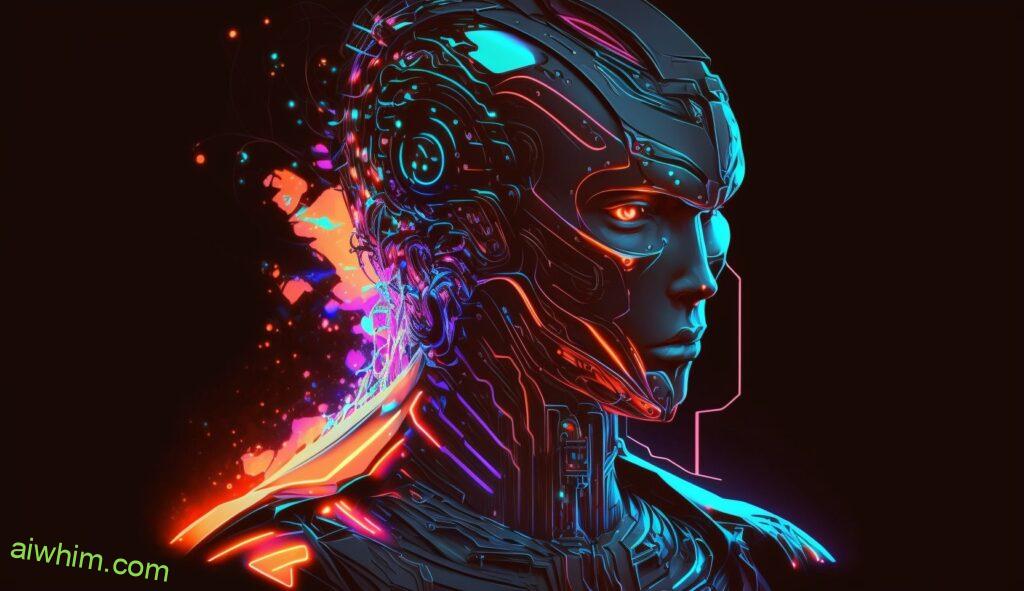
Examples Of Collaborations Between Humans And Machines
AI has the potential to revolutionize how scientists work, but it can also be used in collaboration with humans. There are numerous examples of successful collaborations between humans and machines that have benefited both parties. Here are three notable ones:
- The Human Genome Project: This project was one of the first major uses of AI-assisted research, where computers were used to analyze data from medical studies and genomic sequencing to identify thousands of genes associated with hereditary diseases. Scientists worked closely with computer experts to develop algorithms for predicting genetic mutations based on this data.
- Smartphone Apps: Smartphone apps use artificial intelligence (AI) technologies such as machine learning and natural language processing to provide personalized recommendations or interact directly with users. For example, healthcare applications powered by AI can help physicians diagnose illnesses faster and more accurately than ever before.
- Robotics Research: Robotics researchers partner with AI experts to create autonomous robots capable of executing complex tasks in real-world environments without direct human supervision. Such collaborative efforts have led to breakthroughs in areas like self-driving cars, robotic surgery, and search-and-rescue missions.
These examples demonstrate just some of the many possibilities available when humans team up with machines for mutual benefit; they illustrate how powerful AI technologies can be when applied strategically in a variety of contexts and settings. As new advancements emerge in machine-human interaction, so too do opportunities for greater cooperation—which could lead to even more impressive achievements being made together!
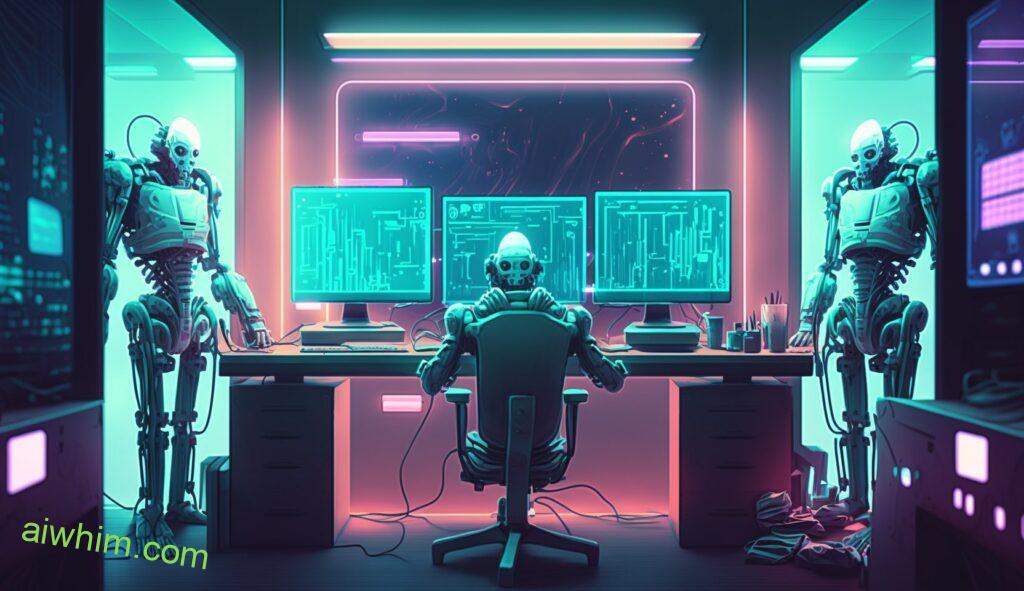
Predictions For The Future Of Work In Science
The future of work in science is uncertain, but the potential impacts of artificial intelligence (AI) and job automation are impossible to ignore. AI-science has become increasingly involved in technology research, leading many to wonder whether a robot scientist could one day replace them. Although it may seem like an unlikely scenario now, policy makers must consider how advances in AI might affect employment opportunities for scientists in the years ahead.
AI-driven technologies have already begun changing the way scientific knowledge is created and shared. Automation tools are making data collection faster and more efficient while machine learning algorithms can sift through large volumes of data with unprecedented speed. This means that scientists will need to adapt their skillset if they want to stay competitive in the labor market as robots take on more complex tasks traditionally performed by humans.
At present, there does not appear to be any immediate risk of widespread job loss due to AI; however, policy makers should ensure that appropriate safety nets are implemented so that workers who do lose their jobs because of automation can find new opportunities. Such policies should also focus on providing training and resources for those transitioning from manual labor into positions where their expertise would be better utilized. In doing so, governments can help create a secure and thriving future for employees working in science professions across the globe.

Final Words
In conclusion, the rise of AI poses both a threat and an opportunity for scientists. While there is no denying that automation has caused job losses in numerous industries, it can also be harnessed to empower work and increase productivity.
This statistic highlights how powerful AI can be when used correctly – as a tool rather than a replacement for human labour. The key is to embrace this technology while maintaining ethical considerations around its implementation. Scientists need to stay informed about advancements in AI so they can use them strategically and remain competitive in their fields.
Ultimately, the future success of scientists depends on their ability to collaborate with machines instead of competing against them. This will require flexibility and dedication to continuously learning new skills, but it promises exciting opportunities for anyone willing to take part in this journey towards the next era of scientific discovery.
Author: Ole Paulson
Author Bio: I’m Ole and on this website, I share everything there is to know about Artificial Intelligence, and useful tips for using AI to our advantage. I have a background in data science and research and have been following the AI-space for years. You can read more about me in the “About” page.

